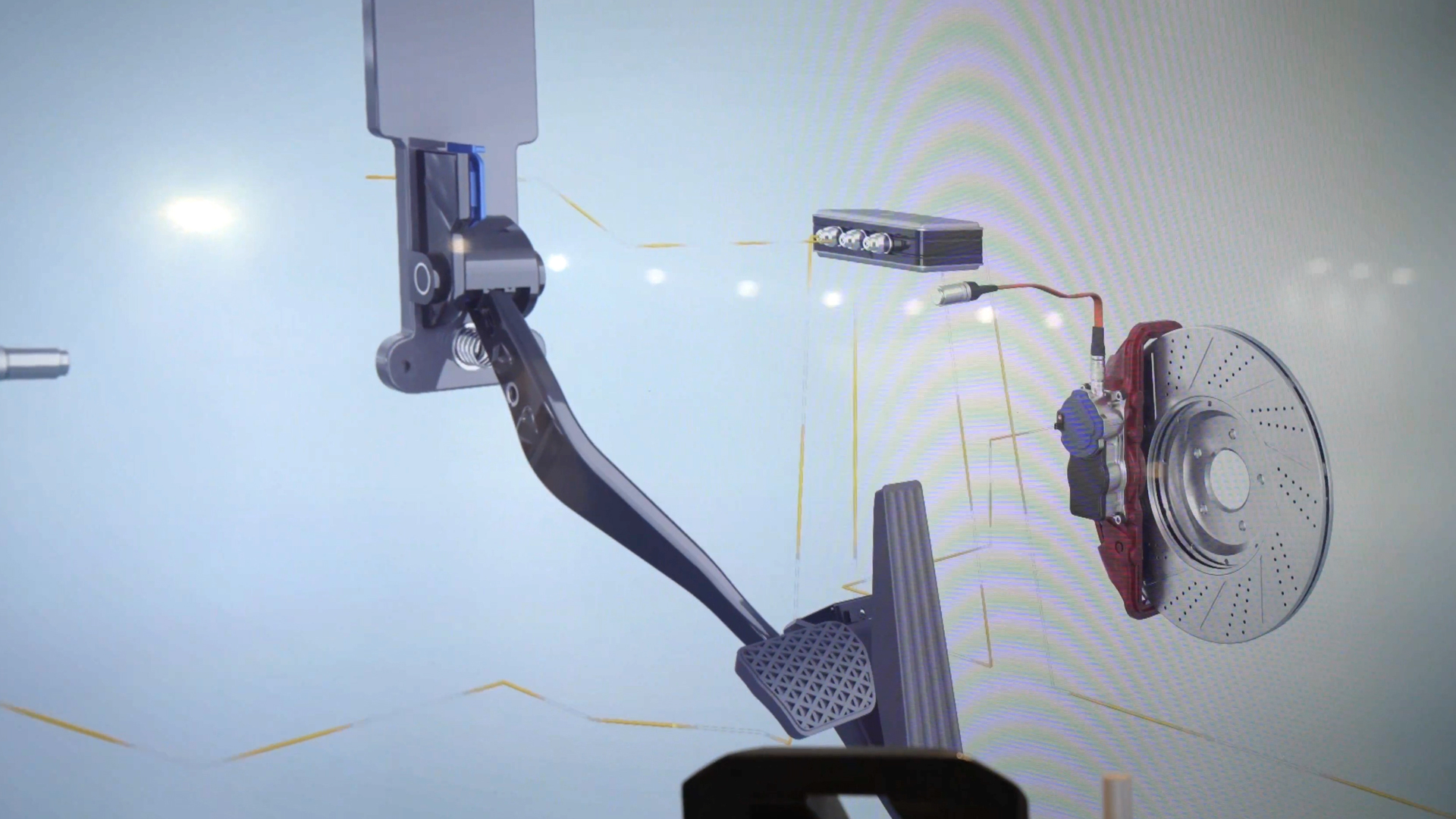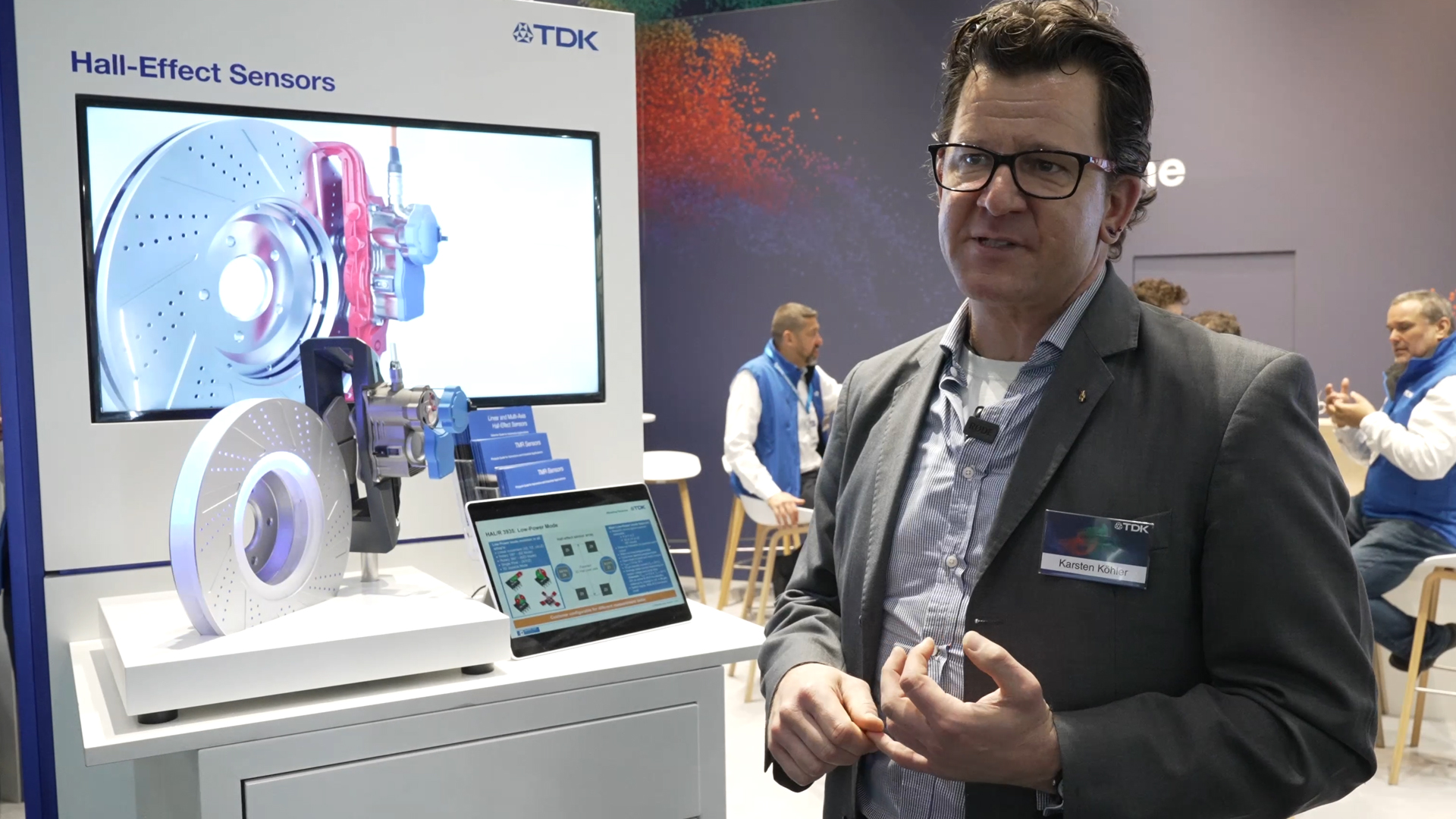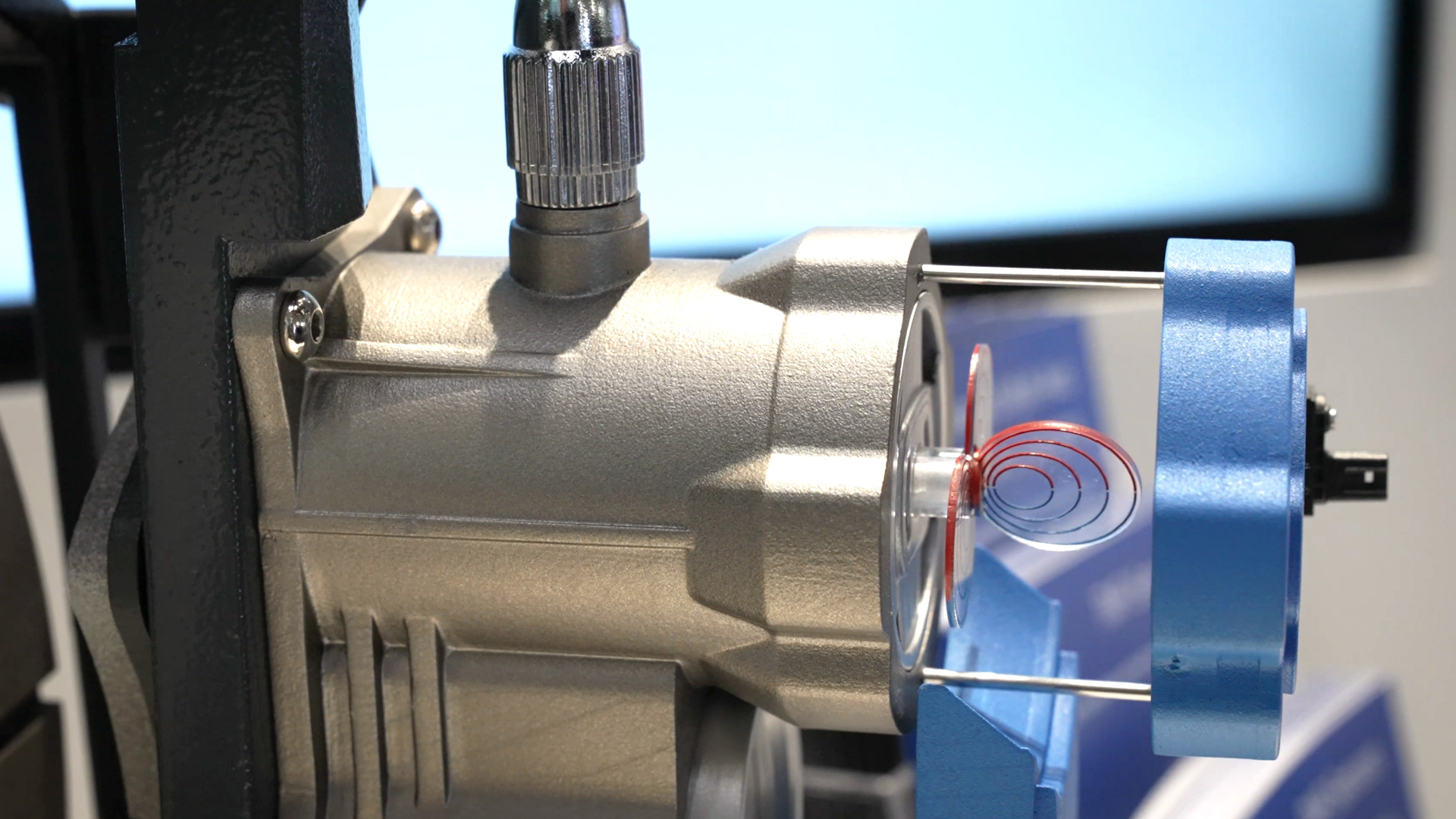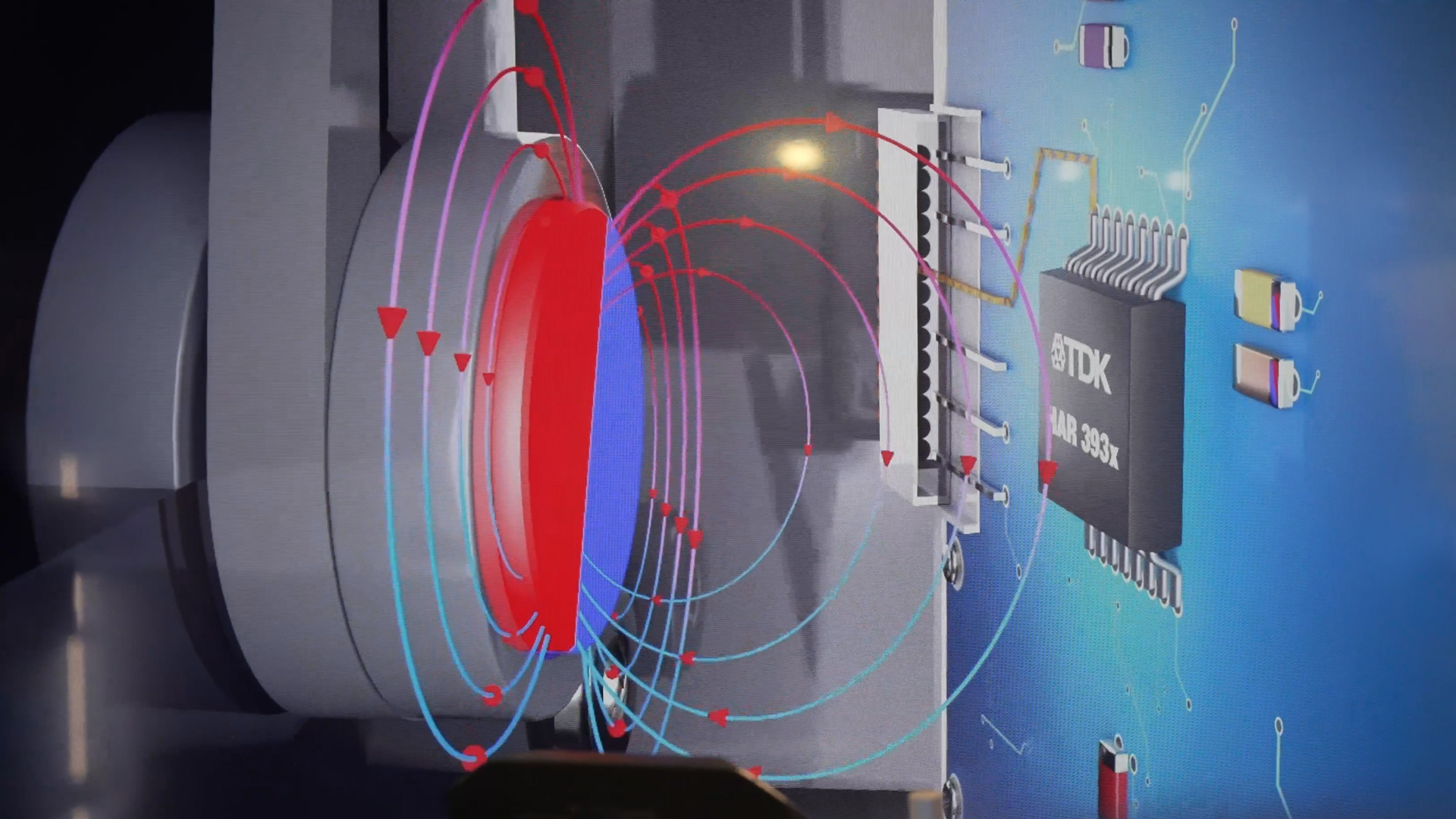In today's vehicles, the braking system is no longer a purely mechanical system, but a highly developed control loop that connects various components, sensors, and digital controls. The trend is clearly moving toward electric brakes, known as brake-by-wire systems. These do not require hydraulic lines, which not only reduces maintenance and weight, but also opens up completely new possibilities for control and safety.
Braking does not begin at the brake caliper, but with the driver – or, more precisely, at the pedal. This is where the sensor technology comes into play, determining how hard the driver is currently braking or wants to brake. The sensor on the pedal, also known as the load sensor, measures the pedal position and translates it into a signal that represents the driver's wish.


This signal forms the basis for all further processes in the system. Depending on the vehicle architecture, the signal is then processed either hydraulically, pneumatically, or electrically. Traditionally, transmission takes place via hydraulic lines, but these are increasingly being replaced by electrical impulses.
In modern brake-by-wire systems, an electric motor moves the piston in the brake caliper. There is no oil circuit – instead, the electrical energy is converted directly into braking force at the wheel.
For this to work, precise control and reliable feedback on how far the piston has moved are required. This is where another sensor comes into play: it continuously measures the piston position and ensures that the desired braking effect is achieved.


Because brakes are among the most safety-critical systems in a vehicle, a single sensor is not enough. In addition to the position sensor that monitors the piston movement, a second, independent safety sensor is used. This checks whether the piston is actually where it should be according to the control unit.
Magnetic sensors are usually used for this purpose – such as Hall sensors or TMR technologies, depending on the requirements for accuracy, interference immunity, and installation space. Manufacturers such as TDK offer both variants, providing the basis for a fully monitored brake system.
In the past, things were clear: passenger cars used hydraulic brakes, trucks used pneumatic brakes. In trucks, the absence of hydraulics is still standard today – not least because oil is heavy and requires additional maintenance. Pneumatic systems transmit the braking force using air and therefore require less weight. The goal of the automotive industry is clear: to reduce the amount of liquid media in vehicles. They add weight, require maintenance, can leak, and are generally cost-intensive.
The electric parking brake, also known as EPB (Electric Parking Brake), was the first step. Instead of a lever, the brake is activated by a switch. This technology marked the beginning of the electrification of the brake system.
The next step was to gradually transfer this technology to the service brake. This places much higher demands on the control system, as a service brake does not just function statically “on” or “off,” but must also apply finely modulated braking force just as reliably as an emergency brake at high speeds.
A modern service brake system must cover a wide range of applications – from light deceleration when parking to emergency braking from high speeds. In the latter case, an enormous amount of energy – sometimes over a megawatt – is converted into heat within a few seconds. These processes are controlled by central control units that evaluate all input signals and translate them into precise motor commands. The requirements for speed, accuracy, and fault tolerance are extremely high.
Many vehicles today are equipped with hybrid solutions, such as electric brakes on the rear axle and classic hydraulic systems on the front axle. The reason for this is the vehicle layout: because the main load is at the front (due to the engine, for example), the greatest braking forces also act on the front wheels.
Nevertheless, it is foreseeable that brake-by-wire systems will continue to gain ground in the coming years. Doing away with brake fluid not only offers technical advantages, but also reduces the service requirements for vehicle users.
This presents significant opportunities for companies such as TDK, which offer sensors for all relevant parameters within the braking system. Whether pedal travel, piston position, or safety monitoring, this manufacturer's components cover the entire spectrum. Accordingly, TDK is already working with all well-known OEMs and brake manufacturers to make the braking system of the future ready for series production.